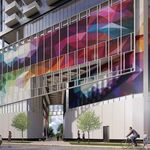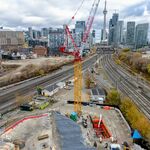Allandale25
Senior Member
Any predictions for the announcement at 230pm?
Too bad about them launching two trains short.
September will be a good test, with vacations ending.
But, but, but... they are not Bombardier! They're Alstom Citadis Spirit (with no proven North American record). See link.
Expansion to under-served areas will accomplish the same thing. Every new rail or other rapid transit line will redirect passengers from existing bus routes and the Confederation Line. At some point in the future, we need to look at more routes serving areas inside the Greenbelt to promote broader intensification and broader access to rapid transit. This is no different than what is happening in Toronto with the proposed Ontario Line and GO RER. They provide parallel service to a degree, but also serve under-served parts of the city as well. We cannot forever be focused on the suburbs, which has been given top priority with current plans. There is plenty of expansion capability built into the Confederation Line. Adding further capacity would have increased the cost well beyond the funding envelope available. Capacity was curtailed in the plan as it was so that costs would not spiral out of control. Any budget overruns would have had to be paid by property taxes, which would have forced additional tax increases. This would not have been fiscally responsible.September will be an artificial read with some parallel bus service still running. What happens if those two vehicles aren't up in October?
To be fair, the bids weren't picked for the vehicle. They were picked for an overall concept which included the vehicle.
Also, I'm not all that confident that the size of the Flexity Freedom would have been good for Ottawa.
The biggest mistake Ottawa made was going LRT instead of HRT. It's obvious that they'll never have non-segregated service on any of their trunk routes. And converting to HRT will be difficult in the future, which means that a substantial growth in ridership could force the construction of parallel lines instead of targeting expansion at underserviced areas.
I had worked on the recommendation for normal metro cars but since there was supposed to be one(!) crossing, it was dismissed. There was also much political pressure to LRT because it looked like the new cooler thing.September will be an artificial read with some parallel bus service still running. What happens if those two vehicles aren't up in October?
To be fair, the bids weren't picked for the vehicle. They were picked for an overall concept which included the vehicle.
Also, I'm not all that confident that the size of the Flexity Freedom would have been good for Ottawa.
The biggest mistake Ottawa made was going LRT instead of HRT. It's obvious that they'll never have non-segregated service on any of their trunk routes. And converting to HRT will be difficult in the future, which means that a substantial growth in ridership could force the construction of parallel lines instead of targeting expansion at underserviced areas.
September will be an artificial read with some parallel bus service still running. What happens if those two vehicles aren't up in October?
To be fair, the bids weren't picked for the vehicle. They were picked for an overall concept which included the vehicle.
Also, I'm not all that confident that the size of the Flexity Freedom would have been good for Ottawa.
The biggest mistake Ottawa made was going LRT instead of HRT. It's obvious that they'll never have non-segregated service on any of their trunk routes. And converting to HRT will be difficult in the future, which means that a substantial growth in ridership could force the construction of parallel lines instead of targeting expansion at underserviced areas.
They should have gone with subway cars. Trains would be wider and cheaper plus they would likely be in service now. I don't think there is any street running in the entire extension. The west extension that's not on the existing transitway would be tunneled.LRT is fine, as the second phase will branch in the west, towards Baseline (Algonquin College) and Moodie, with surface running. The mistake was running with low-floor LRVs instead of high-floor LRVs like those running in Los Angeles, Calgary, or Edmonton. There's just so much more space to work with without the trucks in the way that make the awkward seating arrangements.
They should have gone with subway cars. Trains would be wider and cheaper plus they would likely be in service now. I don't think there is any street running in the entire extension. The west extension that's not on the existing transitway would be tunneled.




